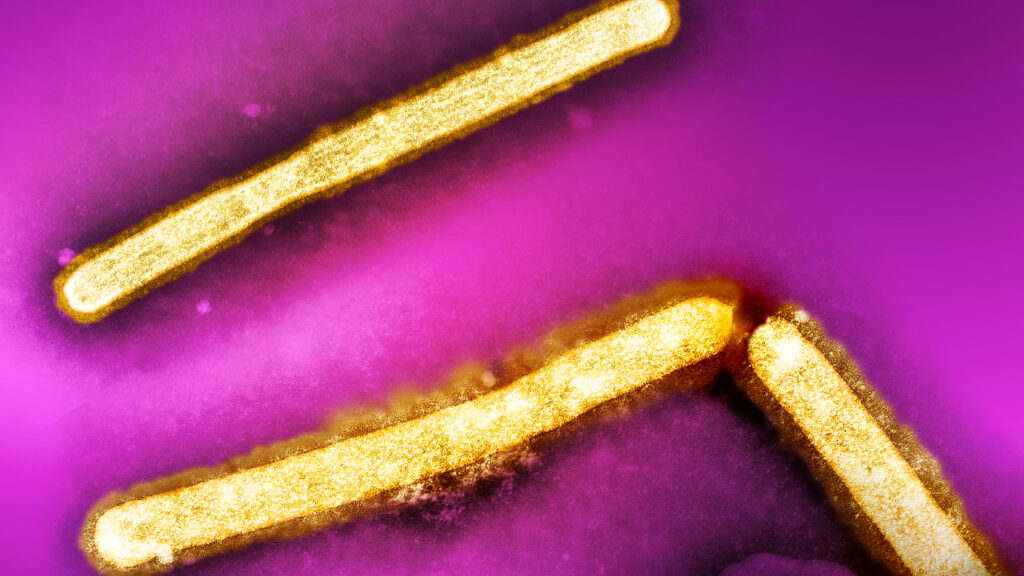Blood testing conducted by the Centers for Disease Control and Prevention has confirmed that one person in Missouri with no known exposure to cattle or poultry contracted H5N1 bird flu in August, and a household contact of the individual may also have been infected. But five health workers who went on to develop influenza-like symptoms after caring for the confirmed case were not infected with the virus.
The findings suggest the state did not see a cluster of bird flu cases, a possibility that some experts had feared.
advertisement
The CDC reported Thursday that the study of blood samples from seven people from Missouri showed clear negative results for the health care workers, but mixed results for the person who shared a home with the confirmed case. The second individual had antibodies to the H5N1 virus, but in order to be considered a confirmed case by the World Health Organization criteria, the individual would also need to be positive by another type of test — and the person did not clear that bar.
CDC officials speaking at a press conference organized by the Department of Health and Human Services and the U.S. Department of Agriculture described the household contact as a possible case, but said the person would not be added to the list of confirmed cases, which currently numbers 31 in six states so far this year. The CDC officials suggested that number will rise, potentially later Thursday.
There will be no clearer answer about whether the household contact of the confirmed case was truly infected, said Demetre Daskalakis, director of CDC’s National Center for Immunization and Respiratory Diseases.
“This is the end of what a lab can do,” Daskalakis said. “There’s no blood test or other testing that can be done that will give us a clearer definition of the nature of these individuals’ exposure. So from the perspective of where we are with this investigation, I think we’ve got the conclusion.”
advertisement
It has been known since early September that one of the individuals, who was hospitalized for three days for other symptoms the previous month, had tested positive for H5N1. It later came to light that a household contact of the person was sick at the same time, but was not tested while ill. The blood testing conducted by the CDC tried to answer the question of whether this person was also infected. The upshot of the testing was unsatisfying — the person looks like a possible case, but cannot be deemed one.
The testing could not indicate how the two became infected, and an investigation by Missouri health department officials failed to turn up solid clues on the source of the infections.
In announcing the testing results, Daskalakis stressed that the CDC believes the two people were infected by exposure to an infected animal or animal product. The fact that they became ill at the same time makes it unlikely that one infected the other, he said.
Six health care workers who cared for the hospitalized person later reported having had flu-like illnesses — a fact that raised concerns that Missouri might have seen a cluster of cases in which the virus had spread from person to person.
While there has been limited human-to-human transmission of H5N1 seen in the past in other countries, it has been rare. In fact earlier this week, Tim Uyeki, chief medical officer in the CDC’s flu division, told a World Health Organization webinar that the last time confirmed person-to-person spread was reported was in 2007 in Pakistan.
One of the Missouri health workers was tested for flu at the time he or she was ill; the test came back negative. But the other illnesses didn’t come to light until after the CDC confirmed on Sept. 6 that the hospitalized person’s positive flu test was actually triggered by the H5N1 virus and the Missouri Department of Health and Senior Services began investigating. By then all the health care workers had recovered, so serology — testing blood for antibodies — was the only way to determine if there had been spread from the patient to the caregivers. That testing proved challenging to conduct, the CDC acknowledged earlier this month.
advertisement
While disease investigators have been unable to figure out how the Missouri case became infected, genetic sequences of viral fragments retrieved from the person who tested positive showed the virus is related to the one that has been spreading in dairy cattle in the country for months. As of Thursday, the USDA has confirmed infections in 339 herds in 14 states.
The ongoing cattle outbreak, which has on occasion spilled over into poultry flocks, has led to a rapid accumulation of human cases in this country, which before this year had only ever recorded a single human case of H5N1 infection. The CDC officials said two recent cases from Washington, which the state had reported on Sunday, have already been confirmed, with five more possible cases still undergoing testing. All these individuals had mild symptoms, said Nirav Shah, the agency’s principal deputy director, though at least a couple had respiratory symptoms, which have not been common to all the confirmed cases so far.
The Washington cases are among workers involved in culling infected poultry on a farm with over 800,000 chickens. Shah said genetic analysis of viruses from the workers revealed they were infected with a slightly different version of H5N1 than has been circulating in cows, suggesting the poultry outbreak was not linked to the outbreak in cows.

